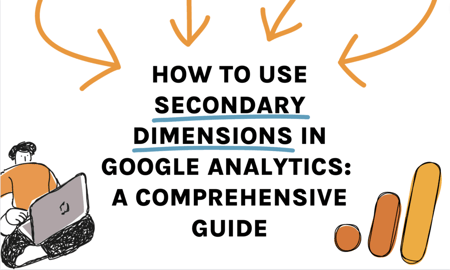Enhance Your Search Engine Optimization Projects with Secondary Dimensions: A Comprehensive Guide
Wiki Article
Transform Your Data Comprehending With Second Measurements
Checking out data via the lens of additional measurements opens a world of untapped understandings, supplying a more nuanced perspective on the details of your dataset. By deciphering the layers beneath the surface area metrics, you can uncover patterns and relationships that may have or else gone unnoticed, leading the way for informed decision-making and strategic optimizations. This tactical use of additional dimensions not just enriches your information understanding yet also offers as a catalyst for opening the complete capacity of your analytics ventures.Advantages of Secondary Measurements

By layering added measurements onto existing information, organizations can evaluate the impact of different variables on key metrics, assisting them make even more informed decisions. Overall, the utilization of second measurements leads to much more robust and insightful information analysis, empowering companies to drive tactical actions based on a much deeper understanding of their information.

How to Execute Additional Dimensions
To properly apply secondary dimensions in information analysis, organizations need to first identify key variables that align with their analytical objectives and goals. This involves identifying the details metrics and dimensions that are most pertinent to the insights they look for to gain from the information. Once these key variables are recognized, companies can then pick the suitable second measurements to boost their analysis better. It is necessary to consider exactly how these secondary dimensions will certainly give extra context and depth to the key information being evaluated.
Analyzing Information With Second Measurements
Utilizing additional dimensions in information analysis enhances the deepness and context of understandings originated from primary data. By incorporating second dimensions into your analysis, you can acquire a more extensive understanding of the connections and patterns within your information. This procedure involves taking a look at the main data via different lenses or point of views, which can reveal surprise connections or trends that may not be promptly obvious when examining the data utilizing only primary measurements.Assessing data with secondary dimensions enables you to segment and team your data in various methods, providing an extra nuanced sight of your dataset. secondary dimensions. This segmentation can help you identify particular factors that might be influencing the end my explanation results you are researching. By piercing down into the data using secondary dimensions, you can reveal useful insights that can lead decision-making and approach growth
Best Practices for Additional Measurements
When integrating second measurements into information evaluation, accuracy in specifying the dimensions is important for extracting meaningful understandings. It is essential to pick second measurements that enhance the main data efficiently.An additional best technique is to prevent redundancy in dimensions. Guarantee that the additional measurements add new perspectives or details to the evaluation, instead of duplicating information already existing in the main dimensions. This will certainly assist protect against confusion and simplify the interpretation of the data.
Furthermore, it is necessary to think about the scalability of the analysis when selecting second dimensions. Select dimensions that can be conveniently expanded or changed as required to suit future data requirements or adjustments in analytical emphasis. By following these finest practices, experts can maximize the value of additional dimensions in data evaluation and gain deeper insights into their datasets.
Making The Most Of Insights Via Secondary Measurements
Incorporating secondary measurements tactically enhances data evaluation by giving a deeper understanding of the connections within the dataset (secondary dimensions). By maximizing understandings through additional measurements, experts can reveal beneficial patterns, patterns, and dependences that might not be quickly apparent when checking out the information via key measurements aloneOne trick benefit of making use of second dimensions is the ability to segment and filter information extra specifically. This segmentation enables a more granular analysis of details subsets within the dataset, enabling analysts to identify relationships and causations that may have or else been neglected.
Furthermore, second dimensions can aid in contextualizing primary information points by adding layers of details that offer an even more thorough sight of the data. This contextualization is essential for making educated choices based upon an all natural understanding of the dataset.
Conclusion
In conclusion, integrating secondary measurements in information analysis procedures supplies a much more comprehensive and nuanced understanding of information, leading to boosted insights and critical decision-making. By integrating additional variables that find out this here straighten with analytical goals, hidden connections and trends can be exposed, giving an extra detailed and contextualized sight of data. This technique makes best use of the possibility for optimization and discovers brand-new opportunities within operations.Overall, the usage of second measurements leads to extra insightful and durable information analysis, encouraging organizations to drive strategic activities based on a deeper understanding of their data.
Using additional measurements in information analysis boosts the depth and context of understandings obtained from primary data.Evaluating data with additional dimensions allows you to segment and team your data in numerous ways, supplying a more nuanced click reference sight of your dataset.When integrating additional measurements into information evaluation, precision in specifying the measurements is important for removing meaningful understandings. Make sure that the secondary dimensions add brand-new point of views or information to the evaluation, instead than replicating info currently existing in the key dimensions.
Report this wiki page